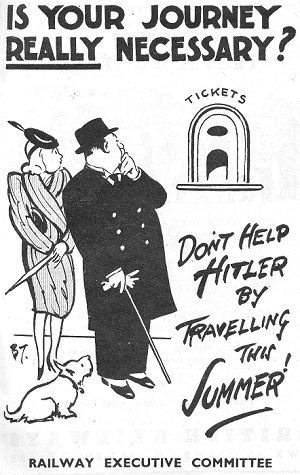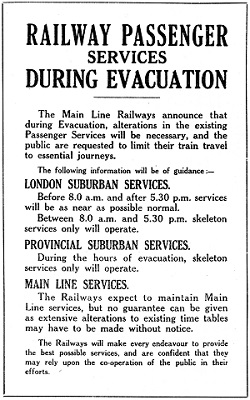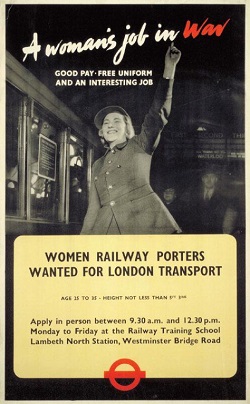| |
Industry Guide

Industry structure
| |
 
Second World War

The outbreak of war on 3 September 1939 had been preceded over the previous days by mass evacuations of mothers and children from major cities, which required hundreds of special trains. These extra workings inevitably disrupted normal services.

1939
The Railway Executive Committee had already been revived, and as in World War 1 it took over the management of the industry on behalf of the government. The railways had also been busy blacking out their premises, including the roofs of major sheds and stations, as air attacks were expected. In the event air raids did not begin until August 1940, but from then on the railways were frequently attacked. Serious damage was caused in some places but staff kept services running, which included vital trains carrying munitions, troops, fuel and food. Ordinary passengers were urged not to travel by posters which asked: ‘Is your journey really necessary?’ At first, the public was told not to shelter in London Underground stations, but the advice changed after the first major air raid on 7 September 1940, when shelterers ignored the forbidding notices and descended to the platforms. The official ban was then relaxed, and thousands of people used the stations as refuges for the rest of the war.

Wartime recruitment
Although the industry was again being controlled by the Executive Committee the individual companies continued to exist, but their shareholders were angered by a government levy which recovered much of the extra revenue earned by running special trains. The railways were also hampered by the loss of male staff who had volunteered or been conscripted into the armed forces, and many women were employed to replace them as guards, porters and ‘signalmen’ although not as drivers or firemen. Peace returned to Europe in May 1945 but the railways had been scarred by their war effort, with only the most essential repairs and maintenance having been carried out. Even so the companies set out plans to develop their post-war businesses, although a Labour government was elected in 1945 which had promised to nationalise several major industries, including the railways. A Transport Bill was debated in Parliament, and this received Royal Assent in August 1947. As a result, the railways would pass into public ownership, controlled by a new British Transport Commission, on the first day of 1948.
 
| | | | | | |



